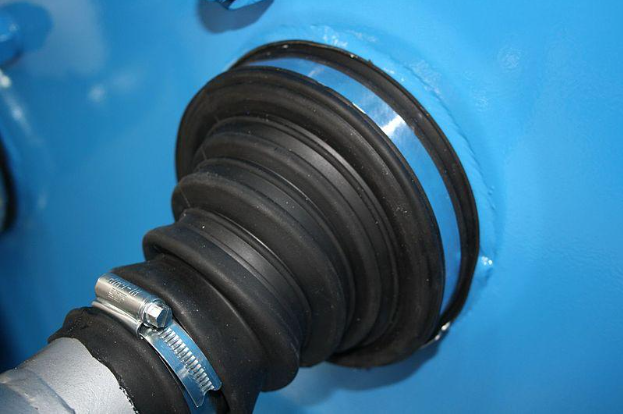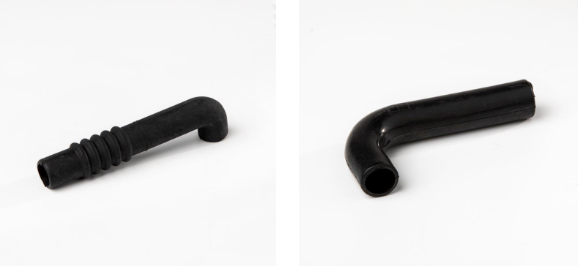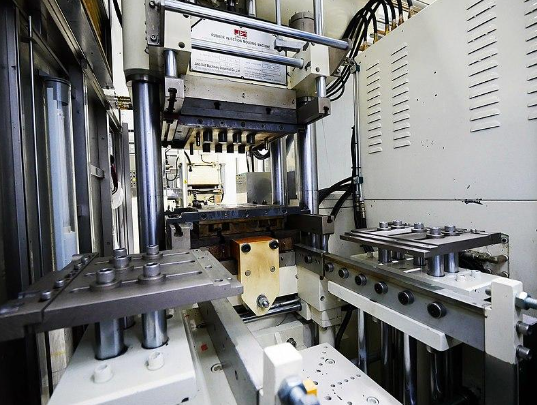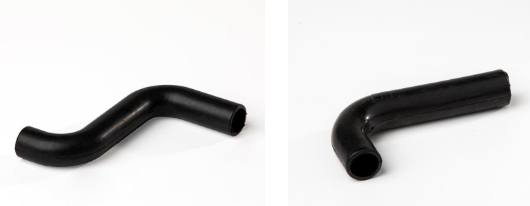
And How Sur-Seal Is Answering Them Tariff volatility isn’t just a finance problem; it’s a supply chain problem. Procurement teams...

When your market-specific parts design requirements include unique shapes, consider molding as your ideal solution. Unlike extrusion and forming, molding allows for complex shapes and cuts and is cost-effective in high volumes. We offer three types of molding to suit your manufacturing needs based on industry, application, build and material requirements. Learn the benefits of each type and what considerations impact your decision to choose molding, extrusion or forming of parts.
Molding is a manufacturing process that shapes rubber, plastic and other materials into unique and complex shapes for an industry-specific application. Using pressure and heat, molding cavities and forms are filled with the desired raw material, which is kept under pressure until it reaches solid state form.
How do you decide if molding is right for your application?
If you’re unsure, you can consult with our engineers during your design build and we will provide you with the most cost-effective and high-quality solution for your project. But first, let’s talk a bit more about the molding process and how it compares to alternative parts manufacturing solutions.

Here are two examples of molded EPDM drain tubes
The most common raw materials used in molding are rubbers, plastics and silicone. Non-pliable materials cannot be molded, and so would not be considered for this process.
All three types of molding are cost-effective for high volume production.
Compression molding is mostly used for rubber parts and components but can serve for silicone as well. Single or multi-cavity forms are used to house the heated material, which is then solidified into final form.

An example of a compression molding machine
Injection molding is often used for plastics and in the formation of PVC pipes and products. The polymer is melted and injected into a mold through a barrel. This method is often more expensive than other types of molding.
Transfer molding can be applied to rubbers or plastics and involves the raw material being liquified before plunging into a closed mold where it is formed into its desired component. This process first involves applying heat and pressure to the material until it is liquid enough to move through a mold. A plunger then transfers the material, forcing it into a closed cavity through gates or screw holes. The polymer is set to an ideal temperature to begin the curing process, which can take 1-3 minutes, upon which a reduced heat post-curing process is completed. The mold is then disassembled to reveal the molded part which can be pushed out by ejector pins.
Compared to compression molding, transfer molding provides better product consistency, shorter cycle times, and better bonding of rubber to metal inserts.
The three main factors to consider are volume, material and application.
For injection molding, volume depends on whether your project requires a single cavity mold or multiple cavity molds. A single-cavity mold yields one product per production cycle while a multiple-cavity mold yields more than one product per production cycle. With this in mind, it’s clear to see that the higher your volume requirement, the more cost effective this process will be.
Molds are more costly to prepare, and since they are custom made for your product, the more parts that can be manufactured out of one mold will bring down your manufacturing costs. If your part requires just a single cavity mold, you may want to consider extrusion as a better alternative. Your Sur-Seal representative can help you determine the best solution for your project.
Only flexible raw materials can be used in any of the three molding processes. This makes rubber, silicone, plastics and PVC all candidates for this type of parts manufacturing.
The industry and requirement needs of your part will also factor into your manufacturing method. Transfer molding, for example, is a great solution for parts that demand a high or tight tolerance and are closed. For our HVAC partners needing drain tube components that are flexible and may result in the rubber bending, injection molding would be ideal.
Forming a part is often a cost-effective alternative to molding. The process of forming begins with extruding the initial part, then curing, finishing and refining it before bending and shaping it into its final form. Parts that require precise bends and angles, multiple types of openings or seals are good candidates for forming.
When would you certainly need molding over forming?
When your raw material requires a high or tight tolerance, molding will always be the winning process. Molding holds a much tighter tolerance than forming, such as in rubber tubing or lathe cutting of parts.

A formed drain tube versus a molded drain tube
Part of your consultation process will include determining the ideal parts manufacturing method for your particular project component, and since we source such a robust range of international raw materials and supplies, we can offer the most comprehensive solution available.
“When you consult with us for early-stage gate concept design solutions, our team can help determine the right manufacturing process for each of your parts and components, of course, but the real value-added lies in our problem-solving expertise in chemistry and engineering.
Our engineers spec out your design, offer optimizations and improvements to ensure you are meeting your production goals.
We have the chemistry background. We bring the material and design expertise.
We’ll suggest methods and unique or alternative materials and solutions with a better margin, giving you an overall lower cost.”
Gregg Szylakowski, Engineering Management, Product Development and Materials Research at Sur-Seal
LEARN MORE: ABOUT OUR ENGINEERING SOLUTIONS
LEARN MORE: RUBBER SEALS AND GASKETS MANUFACTURER